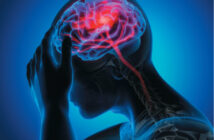The proven, time-tested benefits of acupuncture are why it has grown exponentially in its use throughout the medical spectrum. The practice of acupuncture is fairly new in the U.S., dating back only to the 1970s. Since then it has made significant strides from being known only as a form of alternative care unrecognized and discounted as real medicine by the medical community to currently being allocated as part of the medical research consortium, credentialed in state licensure and national certification, inclusion in private and workers’ compensation (WC) insurance coverages, and as a respectable part of the integrative medical team in hospitals and universities around the country.
In 1996, the FDA declared the acupuncture needle to be a medical device, therefore crediting the acupuncture needle as an “accepted medical instrument,” indicating that acupuncture is a safe and effective medical treatment. Acupuncture is the insertion of micro-fine, single-use, sterile needles into points along pathways on the surface of the body called meridians. The meridians are pathways in which blood, oxygen and nutrients of the human body are circulated. Acupuncture points have a higher electrical conductance and a larger concentration of neural and fine vascular components, along with a greater distribution of mast cells. These mast cells, when punctured by an acupuncture needle, release leukotrienes and prostaglandin to promote vasodilation and an anti-inflammatory process, as well as triggering the local proprioceptive nerves and sensory pain nerves to fire.
Nociceptors are the nerves which sense and respond to parts of the body which suffer from damage. The pain is typically well localized, constant and often with an aching or throbbing quality. When activated, they transmit pain signals (via the peripheral nerves as well as the spinal cord) to the brain. Proprioceptive neurons are known to modulate pain, especially that of deep muscle tissue and from visceral sources. They tell the brain the location of the pain. Patients with chronic pain have a proprioceptive neural threshold too low, not allowing a patient to pinpoint the exact location of pain; therefore, the midbrain release of endorphins is not promoted.
Acupuncture creates a strong stimulation which jumps the neural signal threshold to activate the brain to release endorphins. This needs to be done often since the signal gets weak again and until the body remembers and re-establishes the normal threshold to signal the brain. This reduces myofascial pain and trigger point activity and provides the patient with improved range of motion and increased flexibility while maximizing the strength and mobilization.
The major benefit of acupuncture is that it is an effective, safe and cost-effective treatment for numerous types of acute and chronic pain. Although pain is the most common reason for acupuncture, other benefits include the strengthening of the immune system, blocking pain impulses by closing certain nerve gates from the site of pain to the brain, enhancing overall blood and oxygen flow throughout the body and improving mood and releasing stress.
Some of the most common issues seen among patients, both private and WC, treated by acupuncture are low back pain, neck pain, headaches, joint pain, muscle pain, nerve pain, sciatica, opioid dependency, anxiety, depression and emotional distress. Chronically painful conditions of the musculoskeletal system accompanied by restricted movements of the joints are often treated with acupuncture if surgical intervention is not necessary. For traumas, acupuncture is not only useful for relieving pain without the risk of drug dependence, but may also expedite recovery by improving local circulation.
For instance, in WC, chronic pain cases result in a significant utilization of resources. It is important for claims and nurse case managers to identify these cases early to ensure that proper, safe and effective care is provided. Evidence-based integrative medicine and acupuncture are receiving increasing attention as potentially safer, cost-effective treatment options. Early access to physical medicine interventions, such as acupuncture, is associated with improved patient outcomes at lower cost to the employer. Musculoskeletal complaints are among the most common reasons for WC medical visits. Offering acupuncture can improve clinical outcomes, such as improvements in physical functioning and fear of pain and reduction of opioid prescriptions, usage and dependency, while lowering the costs of care for patients with common musculoskeletal conditions.
Because of the side effects of long-term drug therapy for pain and the risks of dependence, acupuncture analgesia can be regarded as the method of choice for treating many chronically painful conditions. Acupuncture’s analgesic effective rate in the treatment of chronic pain is comparable with that of morphine.
Review of clinical trial reports as documented by the NIH and WHO have shown that chronically painful conditions of the musculoskeletal system accompanied by restricted movements of the joints are often treated with acupuncture if surgical intervention is not necessary. Acupuncture not only alleviates pain, it also reduces muscle spasm, thereby increasing mobility with changes demonstrable by X-ray. Acupuncture analgesia has been well recognized and has been confirmed in controlled studies to relieve postoperative pain.
I would like to share 3 WC patient cases who benefitted from acupuncture in addition to manual therapies (including cupping), heat therapy and electrostimulation/electroacupuncture:
Case #1: 56-year-old female presented with history of numbness and pain to bilateral wrists and hands for 8 years. Patient diagnosed with bilateral carpal tunnel syndrome as per orthopaedic surgeon. After completing eight acupuncture treatments, patient reported significant pain relief, increased strength and improved function.
Case #2: 50-year-old female presented with history of right shoulder and thumb pain for 3 years.
Patient diagnosed with strain of right shoulder as per neurologist. After completing seven acupuncture treatments, patient reported no pain with full range of motion of right shoulder. Patient released to full-time work status.
Case #3: 53-year-old male presented with history of neck pain for 3 years. Patient diagnosed with cervical spine herniated disc as per neurosurgeon. Patient referred for smoking cessation in preparation for surgery. After 11 acupuncture treatments, patient completed protocol releasing tobacco dependence. Patient released to full-time work status and no longer required surgery due to overall healing process.
The outcome measures which supported continued treatment included reduction in pain score, objective improvement of functionality and reduction in analgesics and pain medication usage.
In response to the opioid epidemic, acupuncture was recommended to be used as a first-line non-pharmacologic therapy by the FDA and the National Academies of Sciences, Engineering, and Medicine in coping with the opioid crisis. The Joint Commission has also mandated that hospitals provide non-pharmacologic pain treatment modalities. When searching for a licensed acupuncturist, assure they have completed an accredited master’s-level graduate program and are licensed through their state board of acupuncture. In addition, a diplomate status is achieved by the National Certification Commission for Acupuncture and Oriental Medicine (NCCAOM) – the ONLY national organization that validates entry-level competency in the practice of acupuncture and oriental medicine through professional certification. All licensed acupuncturists are required to carry professional liability insurance.
In conclusion, acupuncture is a safe, cost-effective, medication-free modality as a front-line approach to achieve improved outcomes and reduced costs. It is a form of integrative medicine which is a quality-driven, patient-centered, relationship-oriented practice offering significant potential for patients, payers and employers.





